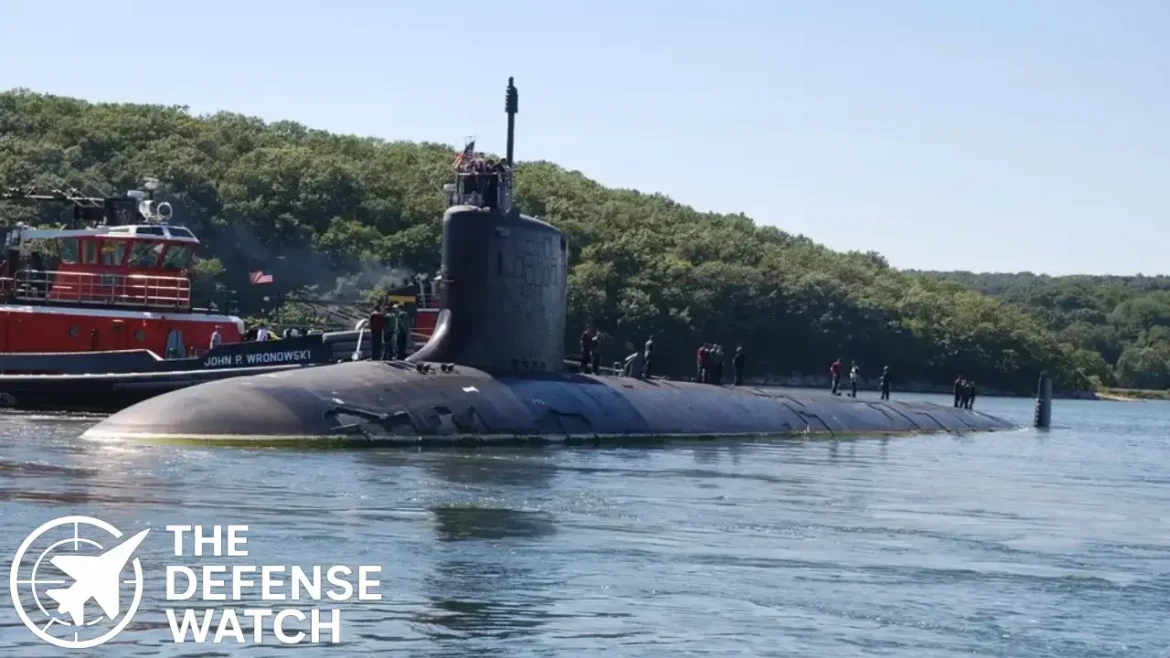Incident off Norway’s coast
A group of Norwegian fishermen hauling halibut nets near the Malangen fjord, west of Tromsø, found themselves entangled in one of the more unusual maritime encounters of recent years. Their fishing net became wrapped around the propeller of the US Navy’s nuclear-powered attack submarine, the USS Virginia (SSN‑774) — dragging the net approximately two nautical miles (roughly 2.3 miles) before a Norwegian Coast Guard vessel intervened to cut the gear free.
The fisherman, 22-year-old Harald Engen, who was on board the small 10m trawler Øygutt, told local media: “I know about other vessels that have sailed over fishing nets, but no one out here have ever heard about a submarine doing so.”
A spokesperson for the US Sixth Fleet, Lt. Pierson Hawkins, confirmed the basic facts: no injuries occurred, the damage estimate to civilian gear is under review, and an investigation is ongoing.
Submarine’s role and regional context
While the US Navy has not publicly disclosed the precise purpose of USS Virginia’s mission in the region, the incident spotlights increased US–Norwegian naval cooperation in the Arctic and adjacent seas. The Norwegian Sea and the Barents Sea are areas of growing strategic importance amid heightened activity by the Russian Navy and the Northern Fleet.
Norway has increasingly hosted US submarine logistics, port calls and crew transfers as part of NATO deterrence efforts. The presence of a nuclear-powered attack submarine operating near Norwegian fjords reflects this evolving operational footprint.
Virginia-class SSN-774 – Full Specifications
- Displacement: 7,900 tons submerged
- Maximum Speed: 25+ knots submerged
- Radar Range: N/A (submarine sonar-based)
- Vertical Launch Cells (VLS): 12 (up to 40 Tomahawks with VPM)
-
Why such an incident matters
At first glance the event may look more humorous than hazardous — after all, a small fishing vessel “caught” a massive US Navy vessel. But beneath the novelty lie several important maritime-security and naval-operations implications.
- Civil-maritime risks: Fishing gear entangling a submarine’s propeller is a serious safety hazard. Historically, such incidents have had fatal outcomes. For example, in 1999 the British trawler Antares sank after its net was snagged by a Royal Navy submarine, resulting in four deaths.
- Submarine-detection and profiling: The event illustrates how submarines operating in littoral or semi-shallow zones — near coastlines or fjords — must manage both overt security roles and the risk of incidental encounters with civilian traffic.
- Arctic/maritime strategy: The higher frequency of US submarine operations in Norway’s waters underscores the changing strategic balance in the High North — where tracking Russian submarine movements from the Kola Peninsula into the North Atlantic is a key task.
Analysis: lessons and implications
From a naval-defence perspective, the incident provides a rare “civilian-observer” lens on stealth-platform operations. A few key take-aways:
- Submarine operations near fishing zones or civilian maritime traffic demand robust deconfliction protocols. Even advanced navies are vulnerable to unexpected gear-snag events.
- The operation reflects the dual-role nature of submarines in modern naval strategy — from deep-ocean stealth missions to surface-access or transit phases in allied waters. The fact that USS Virginia was apparently surfaced or near-surface when the net contact occurred suggests a logistical or transit phase rather than a deep clandestine patrol.
- For Norway and other high-latitude allies, the incident is a reminder that the enlargement of submarine operations entails new interactions with local maritime economies (fishing, shipping) and domestic stakeholders.
- Finally, it serves as a subtle indicator of the broader shift in under-ice, under-sea, Arctic and adjacent-sea naval operations: the strategic importance of the Norwegian Sea is growing, and so are the “edge-case” risks when submarines, fishing vessels and commercial traffic share seas.
Next steps and accountability
The US Navy’s process of investigating the incident is ongoing. The Sixth Fleet noted that when US forces cause damage to civilian equipment, a claims process exists. The Norwegian fishermen reportedly suffered net-gear losses estimated at around 40,000 Norwegian kroner (≈ US$3 600) and were in contact with coastal authorities regarding compensation.
On the policy front, the incident may prompt allied navies to revisit operating-area risk assessments: identifying zones where fishing or commercial traffic intersect with submarine transits, especially in crowded littoral waters or fjords.
Conclusion
The moment when Norwegian fishermen inadvertently “caught” a US Navy submarine is more than an amusing anecdote — it is a micro-cosm of maritime defense dynamics where civilian seas, submarine stealth operations and strategic geopolitics overlap. The event highlights how even in well-regulated allied waters, complex naval operations carry risk and demand careful coordination. The incident also underscores the growing prominence of Arctic/High-North maritime strategy, where navies, coast guards, civilian mariners and local stakeholders increasingly share operational space.
FAQs
How did the fishing nets get entangled in the submarine?According to reports, the fishing net was deployed by the Norwegian boat Øygutt and while the submarine was operating on or near the surface, its propeller sucked in or snagged part of the net, dragging it roughly two nautical miles before being cut free.
Was the submarine on a classified mission?The US Navy has not disclosed the exact mission of USS Virginia in this instance. However, officials noted the region is of strategic interest and the submarine was operating in cooperation with Norwegian authorities as part of broader Arctic maritime defense posture.
Were there any injuries or major damage?No injuries to personnel were reported. The submarine did not publicly report major damage. The fishermen lost their nets and are in discussions for compensation.
Does this kind of incident happen often?While rare, such interactions between submarines and civilian fishing gear have occurred historically. The 1999 sinking of the Antares after a submarine‐net entanglement is a tragic example.
What are the strategic implications?The event underscores how allied submarine operations in contested or busy maritime zones can intersect unexpectedly with civilian activity. It also illustrates the importance of deconfliction and liaison between navies, coast guards and commercial mariners — particularly in the Arctic/High North region where submarine activity is rising.



3 comments
[…] Indonesian defense ministry projects production of up to 30 KSOT units by 2026 under the Navy’s Submarine Operations Command, targeting deployment in strategic […]
[…] Navy submariner and Hudson Institute analyst Bryan Clark suggested the deployment implies […]
[…] with the Navy’s Conventional Prompt Strike program utilizing the same glide body for ship and submarine […]